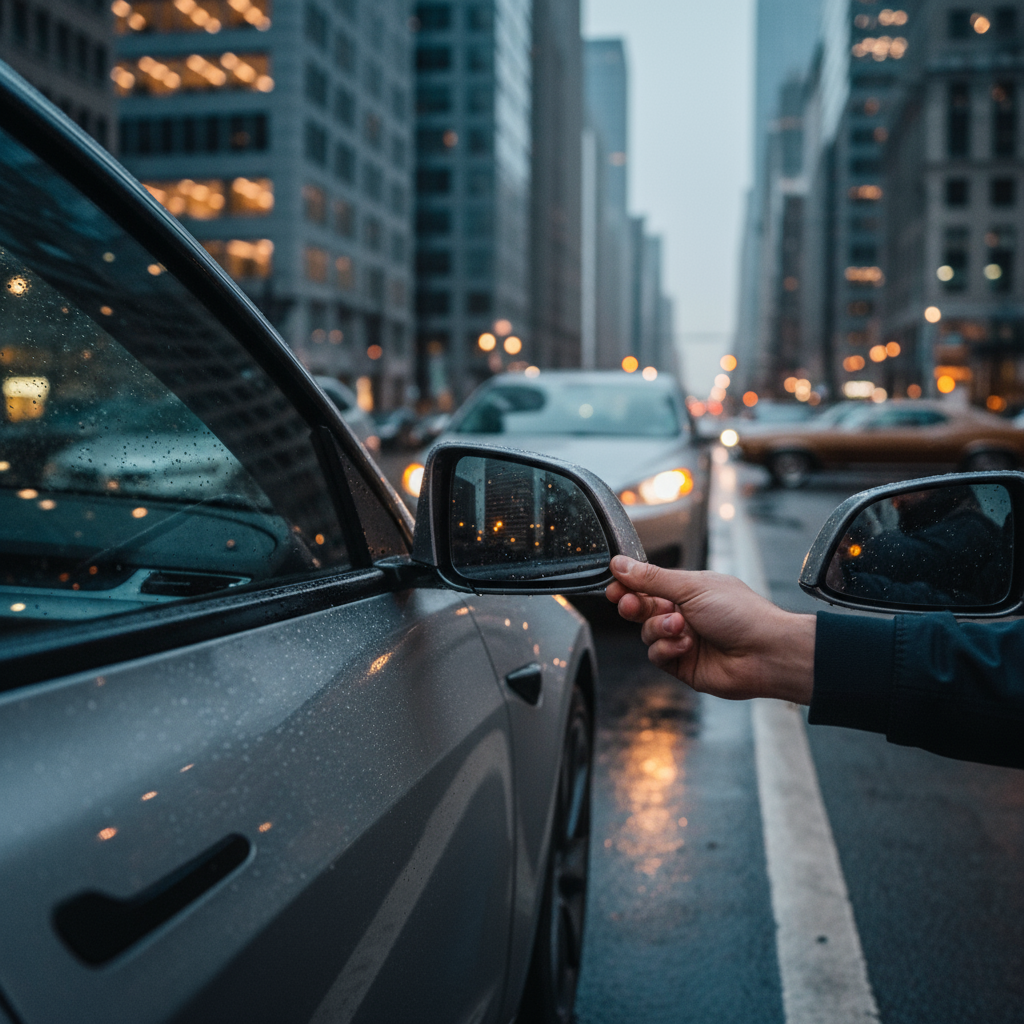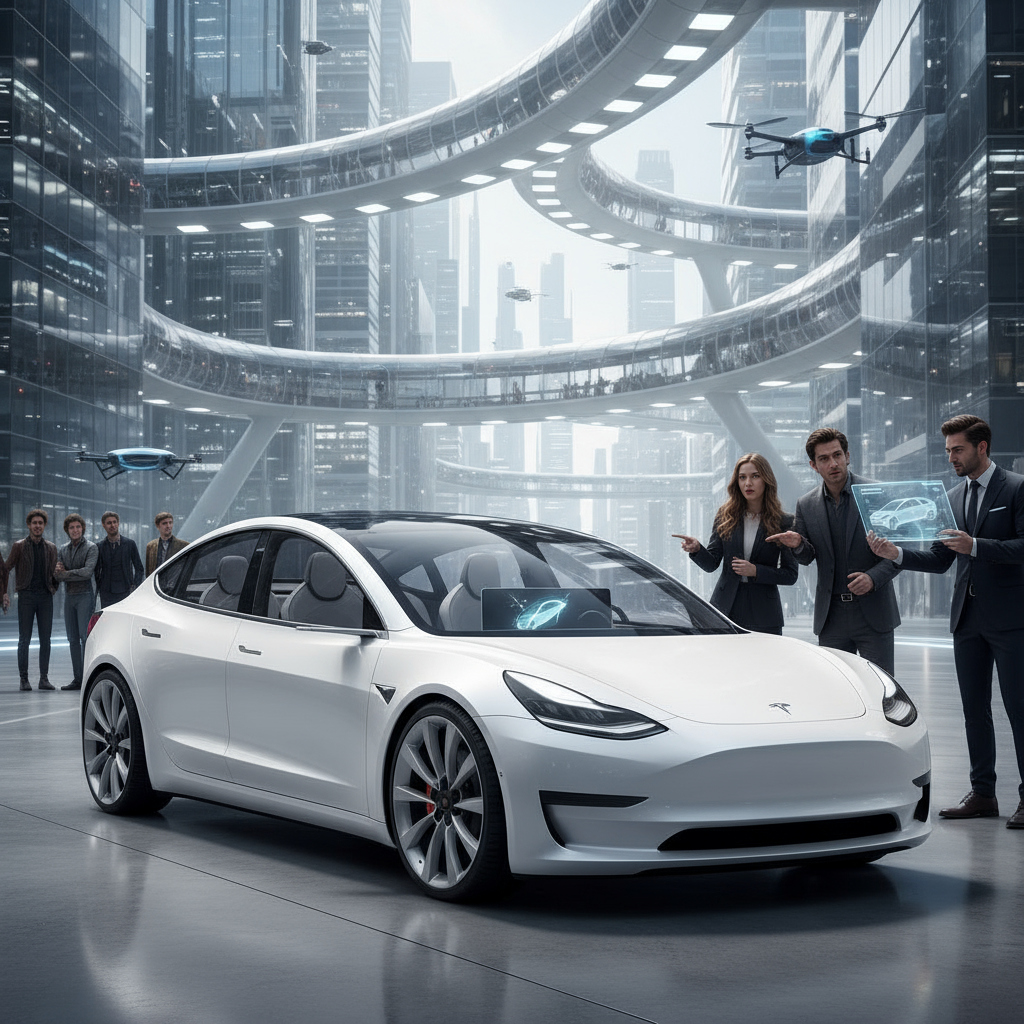The Unsung Feature: Why Tesla’s Manual Side Mirrors Speak Volumes

In the glittering world of futuristic electric vehicles, where touchscreens dictate every command and self-driving capabilities are the holy grail, one seemingly anachronistic detail has emerged from the streamlined design of the Tesla Model 3: manual side mirrors. Yes, you read that right. In an era where even entry-level cars boast power-adjustable, heated, and sometimes even auto-dimming wing mirrors, the $40,000 baseline Model 3 stands alone as the only new car sold in America to still feature old-fashioned, push-and-pull manual mirrors. This seemingly minor detail isn’t just an oddity; it’s a fascinating talking point that reveals a lot about Tesla’s design philosophy, cost-cutting strategies, and perhaps even its vision for the future of driving.
A Peculiar Anomaly in a High-Tech World

Imagine stepping into a brand-new car, fresh off the assembly line, packed with cutting-edge technology. You’ve got an expansive central display, over-the-air software updates, and perhaps even a minimalist cabin devoid of traditional buttons. Then, you reach for the side mirror to adjust it, and your fingers meet a simple, plastic housing – requiring you to physically push or pull the glass into position. This is the reality for owners of the baseline Tesla Model 3. It’s a stark contrast to nearly every other vehicle on the market, from budget-friendly sedans to luxury SUVs, which have long since embraced electrically adjustable mirrors as a standard convenience.
This isn’t a mere oversight; it’s a deliberate design choice that has sparked considerable discussion online and among automotive enthusiasts. The question isn’t just “Why manual mirrors?” but “Why *only* Tesla?” It suggests a deeper rationale beyond simple penny-pinching, especially for a brand synonymous with technological innovation.
The Tesla Rationale: Cost, Simplicity, or a Glimpse of the Future?
There are several plausible theories behind Tesla’s decision to stick with manual side mirrors on its most affordable Model 3. The most immediate and obvious answer is cost savings. Eliminating the electric motors, wiring harnesses, and control switches associated with power mirrors can shave a modest but significant amount off the manufacturing cost per vehicle. When you’re producing hundreds of thousands of cars, these small savings add up to substantial figures, helping Tesla achieve its aggressive production targets and maintain competitive pricing for the Model 3.
Another perspective points to Tesla’s renowned minimalist design philosophy. The company is famous for removing anything deemed non-essential, reducing clutter, and stream-lining the user experience. By removing mirror controls from the touchscreen or physical buttons, they retain a cleaner aesthetic. It’s a design choice that prioritizes simplicity and a less-is-more approach, even if it means foregoing a common convenience. Some might argue that this aligns with Tesla’s overall move towards an autonomous future, where human intervention in such minor adjustments might eventually become obsolete. If the car drives itself, who needs to adjust the mirrors anyway?
The User Experience Conundrum: Convenience vs. Core Features
For many drivers, power-adjustable side mirrors are a fundamental convenience. They allow for quick, precise adjustments while seated, especially important when sharing a car with multiple drivers or parallel parking in tight spots. The absence of this feature can be a mild annoyance, a minor inconvenience that jars with the otherwise futuristic experience of driving a Tesla. It’s a point of friction that doesn’t quite fit the brand’s premium perception.
However, Tesla’s focus has always been on its core mission: accelerating the world’s transition to sustainable energy. This mission manifests in pioneering battery technology, advanced electric powertrains, and cutting-edge autonomous driving features. Perhaps, from Tesla’s perspective, the resources and engineering effort spent on developing basic power mirrors are diverted to more critical areas that align with their long-term vision. They might be betting that the manual mirrors are a trade-off that most buyers are willing to accept for the overall package of electric performance and advanced technology. It’s a calculated decision to prioritize what they consider “essential” innovation over “convenience” features common in the broader automotive market.
Looking Ahead: Will Manual Mirrors Disappear?
The intriguing case of the Tesla Model 3’s manual side mirrors serves as a powerful reminder that even in an age of rapid technological advancement, design choices are often complex, driven by a myriad of factors from cost-efficiency to philosophical stances on user interaction. While the baseline Model 3 proudly (or perhaps stubbornly) retains this analog feature, it begs the question: how long will it last?
As technology progresses, and as Tesla continues to iterate on its designs, it’s highly probable that even the manual mirrors will eventually give way to electric versions, perhaps even camera-based mirror replacements as regulations allow. For now, however, the $40,000 Tesla Model 3 stands as a unique outlier, a high-tech marvel with a surprisingly low-tech surprise. It’s a quirky detail that, far from being a flaw, has become a fascinating symbol of Tesla’s distinctive approach to automotive innovation, inviting us to ponder what truly matters in the cars of today and tomorrow.

